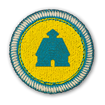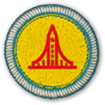Til hamingju is Icelandic for congratulations.
Now you have learned the A-Ö of Iceland and completed all of the regional classes. Hope you had some fun!



Reykjavík is very proud of its LGBTQIA community and has in recent decades become a colourful beacon of queer culture. In addition to being the first country to elect an openly gay head of state, Iceland legalised same-sex marriage in 2010.
Reykjavík Pride is one of the most popular events in the country, with tens of thousands joining to celebrate over several days of festivities, which culminate in the annual Pride Parade. Reykjavík also has a great number of queer-friendly bars and hotels, and various queer-themed events take place throughout the year.


In recent decades Ásatrú, a revival of Old Norse paganism, has become Iceland’s fastest-growing religion, with over 3,000 members. Tolerance, honesty, and respect for ancient traditions are among their most important values, and Pagan rituals include seasonal feasts known as blót, which are held throughout the year.
Most Icelanders share in one of these feasts, Þorrablót, the midwinter festival, where they indulge in traditional foods such as liver sausages, pickled sheep’s testicles and fermented Greenland shark. And while the Pagans are mostly a pretty modern bunch, you can get a taste of Old Norse life at the Viking Village in Hafnarfjörður, which runs feasts throughout the year and a wonderful Viking Festival held annually in mid June.


Given Iceland’s dynamic climate and lack of trees, it’s no mystery that corrugated iron took off as the building material of choice. It can be seen on many of Reykjavík’s older houses, charming ridged constructions typically painted in cheerful bright colours.
Red, blue, green and yellow are the most traditional hues, but keep your eyes open and you’ll see every shade. One of the best places to see the many colours of Reykjavík is Hallgrímskirkja, where you can climb to the top of the steeple and get a glorious 360 degree view of the rainbow of rooftops below.


Reykjavík is close to many natural attractions and makes a wonderful base for exploring the surrounding regions by foot, bike or car. If you’re short on time, Reykjanes is ideal, with volcanic wonders and beautiful coastline all just a short drive from town.
Also close by is the ever-popular Golden Circle, which includes Gullfoss waterfall, the Geysir geyser area and Þingvellir National Park. If you have a little more time, however, it’s worth heading further north to Borgarfjörður, known for its historical sites and natural beauty; or further still to Snæfellsnes peninsula, nicknamed “Iceland in miniature” for its diverse scenery. And if you’re looking for black sand beaches and breathtaking waterfalls, the South is the place to go.


Swimming is more than just a sport in Iceland; it’s a way of life. After swimming a few refreshing laps, locals waddle over to the hot tubs for a soak and a chat. Pools in Iceland are heated with geothermal water, so it’s comfortable to swim outdoors even in the depths of winter.
There are 16 pools in the greater capital area, all of which have hot tubs, and most of which also have saunas, children’s pools and water slides. Note that you’ll have to shower thoroughly before entering the pool, and there are even helpful signs showing you exactly where to wash. This helps to ensure a lovely clean pool for everybody.


Mt. Esja, or Esjan as locals call it, dominates the Reykjavík skyline at 914 m in height. This beautiful mountain looks different every time you see it – golden with deep shadows at sunrise, blue and cloud-capped on a dreary day, or startling hot pink during a snowy sunset.
It is also wonderful up close, with popular hiking trails that are ideal for a day-trip. It’s a 20 minute drive from Reykjavík to the base, and when you reach the top you’ll be rewarded with incredible vistas over the capital and beyond.


Abstract art was a dominant force in the Icelandic art world around the mid 20th century, with key figures including Svavar Guðnason and Nína Tryggvadóttir. Works from this period and many more can be seen at Reykjavík’s numerous excellent art galleries.
The largest are the National Gallery of Iceland, an eye-catching arched building by Tjörnin pond; and the Reykjavík Art Museum, which is spread across three separate locations: Hafnarhús, Kjarvalsstaðir, and Ásmundarsafn. Also very popular is the Einar Jónsson Museum next to Hallgrímskirkja cathedral, which has an enchanting sculpture garden that you can visit free of charge.


Iceland consistently ranks as the most peaceful country in the world on the Global Peace Index, and there are a number of sites around Reykjavík that reflect this pacifist culture. One of these is the Höfði House, where US President Ronald Reagan and Soviet leader Mikhail Gorbachev held peace negotiations in 1986.
Visitors can explore the outside of the building, and there is also a slab of the Berlin Wall on the premises. Close by and a little off the coast is the Yoko Ono Peace Tower, a light beacon that was installed on Viðey island in 2007. It is lit every year in a beautiful ceremony held on John Lennon’s birthday, 9 October, and stays lit until 8 December, the day of his death.


In recent years the Old Harbour has been revitalised as a trendy new hangout spot. Whale and puffin watching tours run from its docks, and various shops, restaurants and tour companies have popped up in the area’s old warehouses.
Colourful boats still dot the harbour, and there are brilliant views across the water to Viðey island and Mt. Esja. And if you walk a little further west and turn right, you’ll reach the Grandi harbour area, which has undergone a similar transformation, with hip cafés, bars, boutiques, and exhibitions all opening up nearby.


Barely a week goes by in Reykjavík without a new festival or seasonal event. The biggest is Culture Night in August, where a third of the country’s population shows up for hundreds of cultural events capped off with a huge fireworks display.
The Icelandic National Day and Reykjavík Pride are also held in summer and are both hugely popular. Meanwhile, the Reykjavík International Film Festival and Iceland Airwaves music festival both take place in autumn, while Food and Fun, Winter Lights and DesignMarch all light up the colder months. There are also countless other festivals celebrating everything from beer to science to classical music, so check local guides to see what’s happening.


Ingólfur Arnarson is considered to be Iceland’s first settler, arriving in around 870 AD. According to The Icelandic Book of Settlements, Ingólfur threw his seat pillars overboard and promised to settle wherever the gods brought them to shore. The gods reacted wisely, and thus he founded Reykjavík, Iceland’s current capital.
Traces of the very first settlers can be found in various places around the city, and in 2001 archeologists discovered the remnants of a turf wall from around 871, as well as an ancient Viking longhouse that dates back to the 10th century. You can see these incredible finds at The Settlement Exhibition in downtown Reykjavík, where they are preserved in their original positions.


While most Icelanders speak excellent English, they are also fiercely proud of their own language and appreciate it when visitors try to learn a few basics such as hello: góðan daginn (“GO-than DYE-inn”), and thank you: takk fyrir (“tahk FIH-reer”).
Iceland is also a nation of readers and writers, and in 2011 Reykjavík became the first non-English-speaking city to be designated a UNESCO City of Literature. Although you won’t master Icelandic on a short stay in Reykjavík, you can still read the country’s finest literature, available in translations at the many bookstores downtown. As the saying goes, “blindur er bóklaus maður” – blind is a bookless man.


Reykjavík knows how to do Christmas. Fairy lights twinkle on every house, illuminating the dim snowy backdrop with light and colour. Christmas markets pop up, carolers fill the cathedrals, and delicious food is everywhere.
The Oslo Christmas Tree is lit in Austurvöllur square at the end of November, and an ice-skating rink opens at the nearby Ingólfstorg square a few days later. Visitors will also have plenty of opportunities to learn about the delightful Christmas characters, who include 13 mischievous Yule Lads and a Christmas cat, who is far less cute than he sounds.


The Reykjavík City Card is a highly convenient and cost-effective way to see the city. For the one-off price of the card, you get free access to a huge selection of museums, galleries, the Reykjavík Zoo and Family Park, all swimming pools in Reykjavík, unlimited bus travel within the greater capital area, and one ferry trip to Viðey island.
The card also gives you discounts at selected restaurants, shops, cinemas, tour companies, and various other services. Cards are available at various locations, including tourist information centres, hotels and museums; and you can choose from cards valid for 24, 48 or 72 hours, depending on what you need.


Reykjavík has an energetic theatre scene, with most locals attending at least one play per year. Naturally, most shows are in Icelandic, but in recent years English-language theatre has also begun to take off, with shows for adults and children taking place in venues such as the National Theatre and Harpa Concert Hall.
Of course, dance knows no language barriers, and you can catch the Icelandic Dance Company at shows at their home base, the Reykjavík City Theatre.


The Reykjavík food scene is booming and blossoming, with innovative restaurants taking local ingredients to giddy new heights. New Nordic is in, and one of its finest purveyors, DILL Restaurant, recently received Iceland’s very first Michelin Star.
It’s not all posh stuff though, and you’ll find a huge range of food to munch on at every price point. One of the most exciting new developments is Hlemmur Mathöll, a transformed former bus station that’s now a food hall and market. And if you’re looking for traditional food, head to Kolaportið market on the weekends, where you’ll find authentic delights such as smoked salmon, fermented shark and homemade baked goods.


The Nordic House is a cultural institution located by Vatnsmýri, a nature reserve next to the University of Iceland. It hosts various cultural events and exhibitions with the aim of strengthening ties with Iceland’s cousins in the Nordic countries.
The building itself is an architectural gem and was designed by acclaimed Finnish modernist Alvar Aalto. The Nordic House features concert and exhibition halls, an interesting library, a Nordic design boutique, and the AALTO Bistro restaurant.


Reykjavík’s houses are heated by geothermal water, which is both clean and cost-effective. It wasn’t always this way though. At the beginning of the 19th century, Reykjavík was often blanketed with smog, much like mainland Europe.
In 1930, the decision was made to switch to geothermal heating, making use of Iceland’s volcanic forces. Today geothermal power is also used to create electricity, and geothermal water is used for everything from heating our pools to defrosting streets in winter.


The Reykjavík Maritime Museum is located by the Grandagarður harbour area in a renovated former fish factory. It features seven engaging exhibitions about Iceland’s maritime history, particularly the fishing industry, which has formed the backbone of Iceland’s economy since the nation’s earliest days. The museum’s largest exhibit is Óðinn, a 910 ton, 63 m Coast Guard Ship that is docked nearby. Óðinn took part in all three of Iceland’s Cod Wars, a series of confrontations that took place between Iceland and Great Britain between 1958 and 1975. Tours run on the ship three times per day.


Plokkfiskur is the humble yet tasty staple of traditional Icelandic cooking. Its main ingredients are cod or haddock, potatoes, onion and plenty of butter, and it is served with sweet, dark rúgbrauð (rye bread) on the side.
You’ll find it on various menus around Reykjavík, along with huge variety of other fish dishes. Many of the town’s best seafood restaurants are located close to the harbour, and the sights and sounds of the water nearby make the perfect accompaniment to a delicious meal of fresh-caught fish.


Harpa Concert Hall and Conference Centre is Reykjavík’s newest and most dazzling landmark. The building was designed in part by Ólafur Elíasson, an Icelandic-Danish artist best known for his light installation pieces.
His influence is clear on Harpa’s basalt-inspired facades, which light up and swirl with colour during the dark months, and twinkle with mirrored sunlight in summer. Of course, Harpa is not just beautiful but also functional, serving as a venue for concerts, theatre, exhibitions, conferences and conventions. Whether you catch a show or not, it’s worth a peak inside.


Iceland does not typically conjure images of yellow sandy beaches with balmy warm water, but the beach at Nauthólsvík is precisely that. To be fair, the sand is imported and the water is geothermally heated (this is Iceland, after all), but it’s a little piece of paradise nonetheless.
Better still, there’s also a long hot tub, so you can enjoy the sights of the beach while soaking in toasty warmth. And if that sounds like a cop out, drop by in winter, when a few brave souls take an invigorating dip in the icy sea.


Tjörnin pond is easily one of the prettiest spots in Reykjavík, framed by the city’s colourful houses and lush green park land. On a still summer’s day, the water reflects the cityscape in a perfect mirror image, and during winter it all freezes over, allowing visitors to walk or skate across it. Tjörnin is also home to as many as 50 bird species, the most common being mallard and eider ducks, greylag geese, seagulls, whooper swans and Arctic terns. Many birds even stick around for winter, living a life of luxury thanks to a little geothermal water.


On 17 June, Iceland’s National Day, you’re likely to see locals proudly donning the Icelandic national costume in its various forms.
The women’s version typically consists of a white blouse, a laced black bodice, a long skirt and a patterned apron, while the men’s version usually includes breeches, a double-buttoned vest and jacket, finished off with a woollen cap.
These costumes are not factory made but crafted by hand with love and care, and worn on special occasions such as weddings and confirmations. You can also see them at the Árbær Open Air Museum, a wonderful folk museum that recreates life in Reykjavík in the 19th century.


Runners are a common sight around Reykjavík, no matter the season. With lovely scenery and clean fresh air, a jog is usually appealing. Runners also have the opportunity to put their skills to the test every year on the third weekend of August, when the annual Reykjavík Marathon takes place.
Over 10,000 participants from Iceland and around the world take part in events including a full marathon, half marathon, 10 km, and a family Fun Run. Events begin early and start and finish at Lækjargata in the centre of downtown.


Viðey is a small island just off the coast of Reykjavík. It was inhabited from around 900 AD until the 1950s, and today a number of interesting relics remain, including 10th-century ruins, one of Iceland’s oldest churches, and the historic Viðey House.
The island is an excellent place for birdwatching, and there’s a lovely café open during summer. Viðey is also home to the Imagine Peace Tower, a light installation conceived by Yoko Ono in honour of her husband, John Lennon. Ferries operate daily during summer season and on weekends only during the rest of the year.


Halldór Kiljan Laxness (1902–1998) is Iceland’s most renowned novelist, and in 1955 he won the Nobel Prize for Literature for his epic novel Independent People. In 1945 he and his wife Auður Sveinsdóttir built a house by Laxnes, the farm he grew up on (and from which he adopted his surname).
Today the house, known as Gljúfrasteinn, is open as a museum dedicated to his life. It is set in the countryside just outside of Mosfellsbær, a short drive from Reykjavík. In addition to interesting keepsakes from his life and work, Gljúfrasteinn also contains paintings by some of Iceland’s most famous artists.


The Icelandic Sagas are gripping page-turners known for their larger-than-life-characters and epic battles. Although most of the stories are based on historical events, their ancient authors weren’t afraid to take poetic licence, and thus many key figures are said to possess outstanding physical strength, mental prowess or even supernatural talents.
You can learn more about the events of the Sagas at the Saga Museum, which recreates life in the Saga Age using detailed wax figures.


The National Museum of Iceland takes visitors on a fascinating journey from the time of the first settlers through to modern-day Iceland. It houses many priceless artefacts, including intricate Viking metalwork, a 12th-century carved church door, and even a Viking grave.
A visit to this remarkable museum will help you make sense of the places you see during your time in Iceland and will give you valuable insight into the roots of today’s society and culture. Many of the exhibits are interactive, and the optional audio guide is well worth a listen.


Reykjavík is an exceptionally child-friendly city. It is clean and safe with a compact centre that is easy to navigate, and there are natural attractions within easy driving distance.
The attitude towards families is also relaxed and accommodating, and you’ll find good facilities for children in most restaurants and shopping areas. Reykjavík also has many cultural and recreational activities geared towards children, so you’ll be sure to find things to do that the whole family will enjoy.


Iceland has come a long way since lifting the ban on beer in 1989. The local brewing scene has taken off in recent years, flooding the market with dozens of new and delicious varieties that are made all that much better by Iceland’s pure spring water.
The bar scene has also continued to grow, and nightlife in Reykjavík is known for its wild partying. One thing worth knowing is that Icelanders tend to head out late on the weekends, so don’t be surprised if bars are relatively quiet before 11 or so. Things start really heating up around midnight and hit their stride around 2 am. Take a nap first and try to keep up with the locals.
Now it is time to learn more about the 7 regions of Iceland.
Take the quiz to test out your skills and be one step closer to know all about the 7 regions of Iceland!


You just aced this class so you are now one step closer to knowing the 7 regions of Iceland inside out.
Share on Facebook


Now you have learned the A-Ö of Iceland and completed all of the regional classes. Hope you had some fun!
Finish all the classes to have the chance to win a trip to Iceland
With a population of 120,000, Reykjavík is not a whirlwind metropolis. Few skyscrapers grace the skyline, traffic jams are rare and faces are familiar. But don't be deceived—a steady beat of energy and events keeps the city alive and pulsing with excitement.
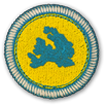

There is something magical about the Westfjords, the region that could arguably be labelled "Iceland's best kept secret". Isolation has preserved the region in a relatively unspoiled wilderness, making it a must-see for any serious explorers.
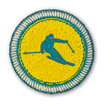

It's all about beautiful contrasts in the North, a land where long valleys and peninsulas are interspersed with big mountains, lava fields and smooth hills carved out by powerful rivers. Go big or go home!
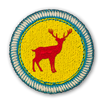

If drifting through picturesque fjords from one warm town to the next is your cup of tea, head to the East. It is home to the country's largest forest, lush farmlands and even the mysterious lake monster in Lagarfljot.
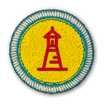

What's so cool about Reykjanes? Not only is it where most visitors set foot in, a geothermal wonder and the home of the spectacular Blue Lagoon, but also a place where lighthouses outnumber villages.
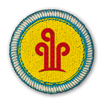

If the regions were pop songs, the South would probably be the chart-topping hit, since it is renowned for its beauty and the home of some o f the country's most visited tourist attractions.


